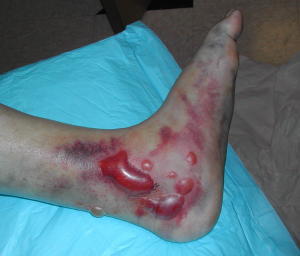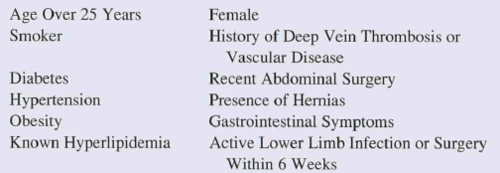Fracture blisters pop up (!) in trauma patients now and then, and nobody seems to know what to do with them. Here’s a primer on dealing with them.
A fracture blister typically occurs near fractures where the skin has little subcutaneous tissue between it and bone. These include elbows, knees, ankles and wrists. They tend to complicate fracture management because they interfere with splinting, casting, and incision planning for open reduction procedures. They can appear anytime within a few hours of injury to 2-3 weeks later.

These blisters are thought to be caused by shearing forces applied at the time of injury. There are two types described, based on their color: clear fluid and hemorrhagic. The difference lies in the level of the shear. Clear fluid blisters have separated within the epidermis, and hemorrhagic blisters separate at the dermal-epidermal junction. The clinical difference is healing time; clear blisters take about 12 days and hemorrhagic blisters heal in about 16 days.
So should we pop the blisters and operate/splint, or wait for them to heal and then go to surgery? Unfortunately, there’s no great data on this and it usually hinges on the preferences of the orthopaedic surgeon. Waiting delays care an average of 7 days, and longer for tibial plateau and calcaneal fractures. Operating immediately anecdotally increases wound infection rates.
Bottom line: Anticipate fracture blisters by looking at location and severity of mechanism. Try to schedule operative reduction as soon as is practical. And monitor the wound closely to make sure that delayed blisters don’t cause complications due to splinting or casting.




